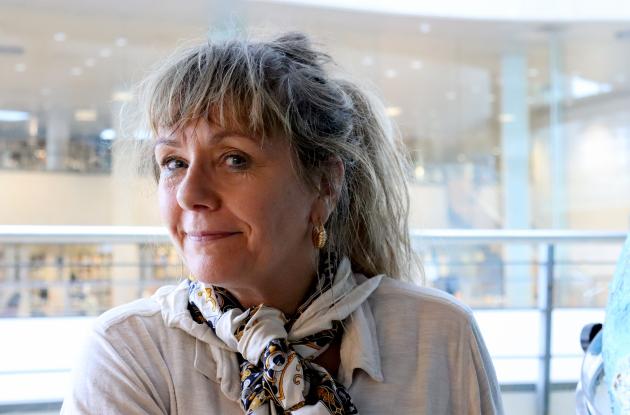Line Knutzon: On everything between the lines
Dramatist Line Knutzon gives good advice on how to read drama, and she dreams of drama becoming a permanent part of the curriculum in primary school.

Photo: Det Kgl. Bibliotek
Reading a play is different from reading a novel or a poem. Drama is written to be spoken on a stage – and in addition to the lines, a lot happens on stage. Therefore, you have to activate your inner theatre when you read a play. Playwright Line Knutzon comes up with a number of suggestions on how to approach it.
The inner theatre
A script consists of a cast list with the participating characters, stage notes that briefly describe where we are, and lines. There is air between the lines,
explains Line Knutzon. This means that in some cases the opposite of what is said on stage takes place. When you see a play, there is a director, a set designer, a lighting designer and a sound designer. They have decided what is going to happen, how it looks and how it sounds, to put the audience in a certain mood.
When you sit with the text, on the other hand, you have to activate your inner theatre and imagine how something is said and done. Basically, it is about enlarging what is written and visualising it. If it says 'there's a knock', then you should actually read 'there's a KNOCK!'
, Knutzon explains. You should hear it knocking. If it says that a character does something in a particular way, magnify it for your inner gaze. In that way, drama is very impractical. It's something that's going on. At the same time, there is a lot that is not in the text that you have to imagine. All that is not said.
More than a plot
When a theatre text is staged, it is often difficult to put the experience into words. After a performance, you do not need to be able to describe an action as in a crime story, explains Knutzon. The form is far more complex. It's like a painting: It transcends bigger and higher than a plot.
According to Knutzon, visual arts and theatre have in common that they capture the world that we cannot see. The artists are the ones who get up every morning and say: What happens if we move that thought here or face that feeling [...] and you can do that without anyone getting hurt
. According to Knutzon, it is absolutely central in a society that ways of thinking or "the common track" are challenged, because a society is full of routines and habits.
In drama, it is more difficult [to activate images in your head], because there are no descriptions of people's inner thoughts. So it's the lines that carry it. It is a very different experience to read it.
Drama is for everyone
In Denmark, we do not have a strong tradition of publishing drama. Perhaps it is because reading drama is foreign to many
. Knutzon describes drama as the awkward cousin of literature that is not invited to the party. Unlike another literary form, the poem, drama is not a fixed part of the primary school curriculum.
Knutzon's vision is that already in the third grade, parallel to reading fairy tales, for example, you become familiar with dramatisations of the fairy tales. These should just be read at a table, not staged. By working with the dramatic form in primary school, students will learn about everyday role-playing - what is said and what is not done - and they will gain a better understanding of why drama must immediately create action, because it does not have the descriptiveness of the novel form.
The plays that Knutzon dreams of including have not yet been written, but perhaps for the slightly older school children, inspiration can be found in the children's and youth drama that Jesper Bræstrup Karlsen recommends.
About Line Knutzon
Line Knutzon is a playwright and author. Knutzon has received a large number of awards, including the Holberg Medal in 2006. Her drama is characterised by sharp contemporary analyses in grotesque universes. She is associated as a house dramatist at Betty Nansen Teatret.